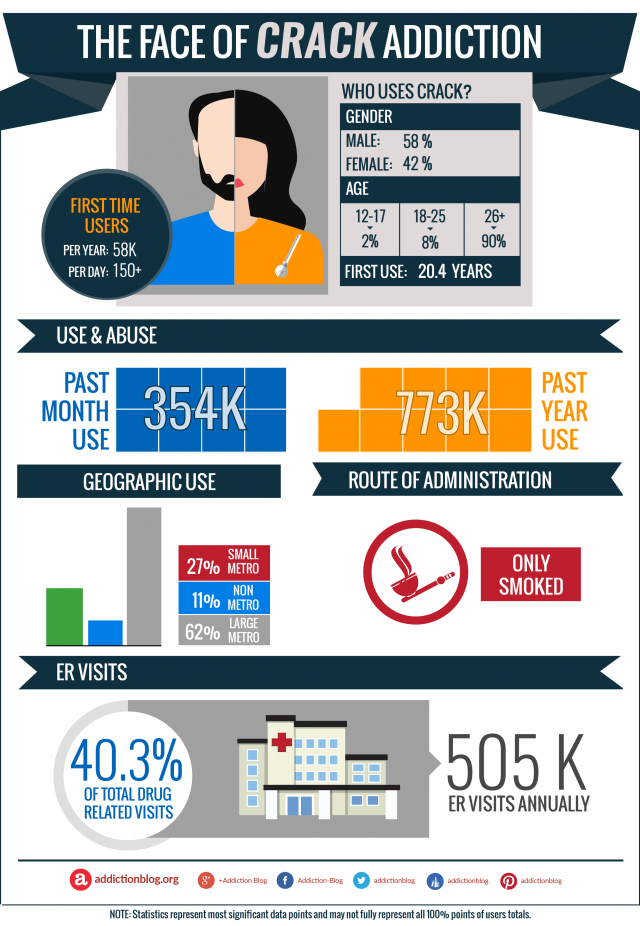Who uses crack in the U.S.?
The 2006 NSDUH (National Survey on Drug Use and Health) in the U.S. reported that 8.6 million citizens aged 12+ have admitted to using crack. About 1 million Americans (0.5%) say that they tried crack in the year previous to the survey, while “regular” crack users who report past month use represent 0.2% (406,000 people) of the total population.
A survey by Monitoring the Future showed that among high-school students, 3.2% of twelfth graders had used crack cocaine at some point in their lives.

Some of the most recent numbers regarding active cocaine addiction suggest that almost 1.4 million U.S. citizens meet the criteria to be classified as dependent on cocaine under definitions provided by the Diagnostic and Statistical Manual of Mental Disorders (DMS-IV).
Q: But, is crack cocaine the same as powder cocaine?
A: Not really!
In July 1986, in the midst of a surge of articles regarding the crack ‘epidemic’ both the U.S. Senate and the House of Representatives held hearings on the perceived crisis. At these hearings, it was asserted that crack:
- was more addictive than powder cocaine
- produced physiological effects that were different from and worse than those caused by powder cocaine
- attracted users who could not afford powder cocaine, especially young people
- led to more crime than powder cocaine did
What risks do crack users face?
1. ER visits: Problems with cocaine were responsible for almost a quarter of the 2 million ER visits that were due to drug abuse, while one of the greatest health risks continues to be overdosing on crack.
2. STDs: Crack cocaine smokers exhibit more high-risk sexual behaviors, including multiple sexual partners, sex without condoms or other barriers, and sexual activity during or following drug use. Although the practice of trading sex to support a drug habit is not unique to crack cocaine, between one-quarter and one-third of all drug users have traded sex either for drugs or for the money to buy drugs.
- gonorrhea
- herpes
- syphilis
- viral Hepatitis
- bronchitis
- chronic cough
- black sputum
3. Impact on children of crack users: Infant and child exposure to crack cocaine use can be risky for child development. Some of the general concerns include:
- poor nutrition
- other drug use
- lack of prenatal and postnatal care
- dysfunctional parenting
However, negative factors from crack cocaine use continue to other parts of users’ life and impact their own finances, criminal record, health status, relationships with family and friends, etc.
The face of crack addiction questions
If you have any questions? Maybe you’d like to learn about the ways you can quit crack safely? Feel free to post them in the comments section at the bottom of the page! We try to answer all legitimate inquiries personally and promptly, or we will refer you to professionals who can help.








Related Posts